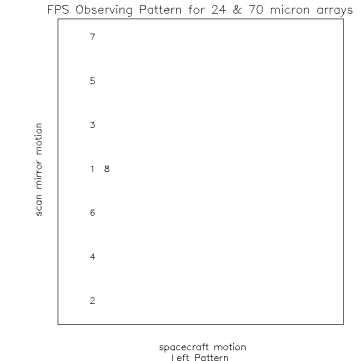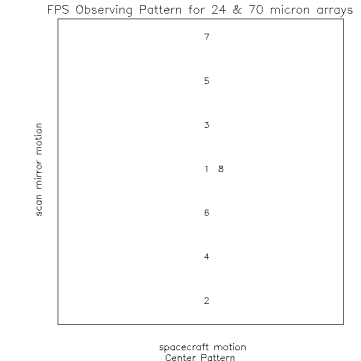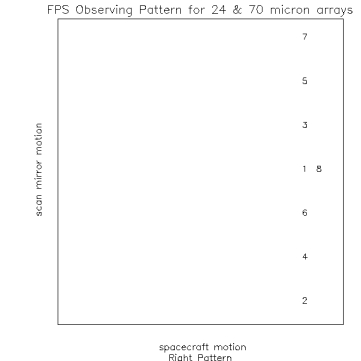Observing Strategy



Figure 1. Observing Pattern at 3 locations on the detector. Note size of
box is not the total size of the array but a portion of the central
region which depends on array and if it is a coarse or fine survey
Principal: Jocelyn Keene
Deputy: Jane Morrison, Bill Wheaton
Data Monkey(s): Jane Morrison, Bill Wheaton
Priority: Critical
Downlink Priority: Normal
Analysis Time: Campaign Q: 2880 minutes, Campaign R: 2880 minutes, analysis of combining Campagin Q and Campaign R: 120 minutes
Last Updated:
See IER for the star chosen. This star was chosen as the 24 µm focal plane calibrator based on the following requirements:



Figure 1. Observing Pattern at 3 locations on the detector. Note size of
box is not the total size of the array but a portion of the central
region which depends on array and if it is a coarse or fine survey
Number of observations from step 1-5, 48. Step 1-5 repeated 7 times for a total of (48 * 7) = 336 observations. For the fine survey this set of observations is repeated a second time for a total of 672 observations.
Array Data Desired:
24 µm
Data Reformatting Option:
Special Instructions:
A single FITS multi-image extension file is needed for each campaign. One image extension per DCE, processed through DAT. Input data from SSC PIPE0, sent to Jane Morrison at UA for calibration. File "mips_YYY095.fits" returned to SSC for centroiding, where "YYY" is 3-digit string denoting run number, and "095" is IPF code for 24 µm data.